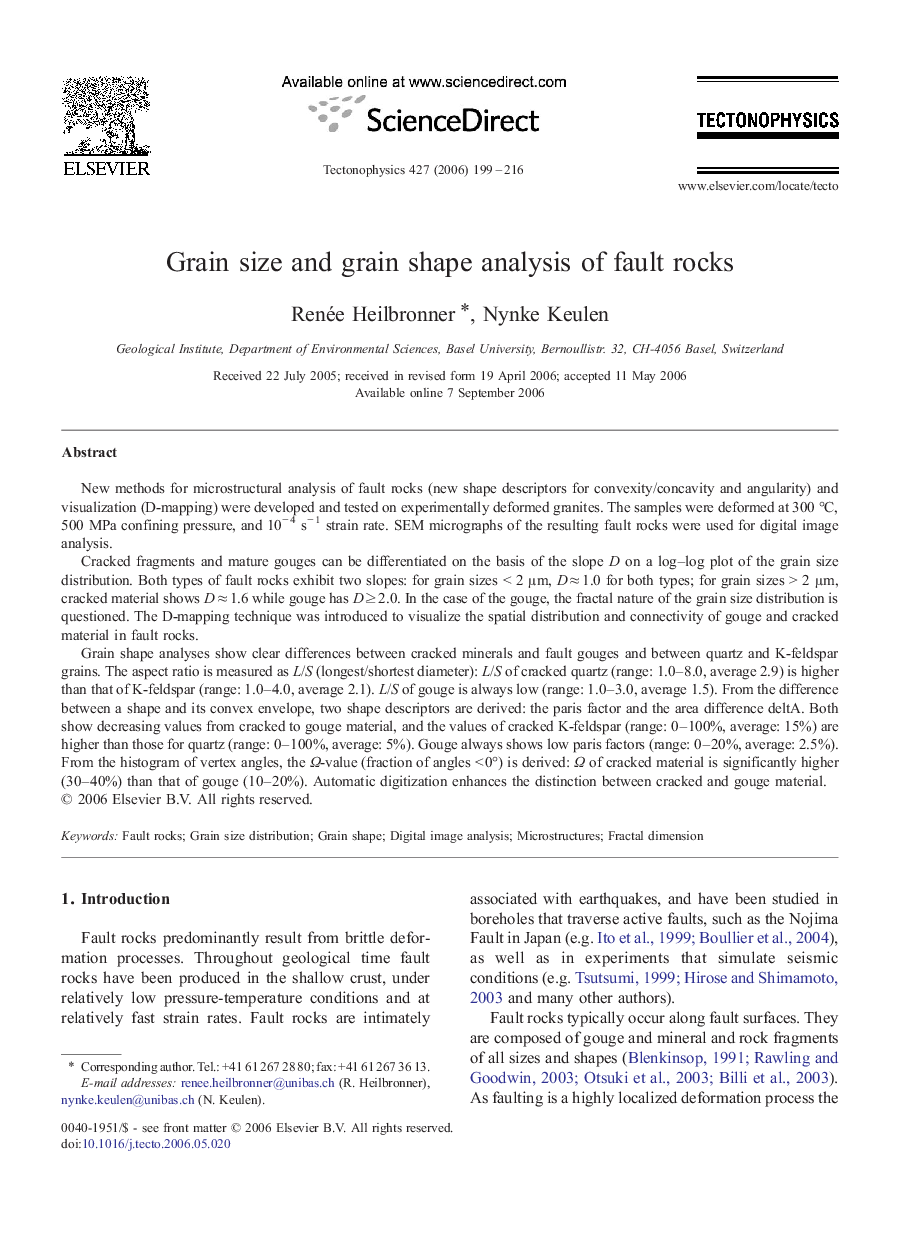| Article ID | Journal | Published Year | Pages | File Type |
|---|---|---|---|---|
| 4695035 | Tectonophysics | 2006 | 18 Pages |
New methods for microstructural analysis of fault rocks (new shape descriptors for convexity/concavity and angularity) and visualization (D-mapping) were developed and tested on experimentally deformed granites. The samples were deformed at 300 °C, 500 MPa confining pressure, and 10− 4 s− 1 strain rate. SEM micrographs of the resulting fault rocks were used for digital image analysis.Cracked fragments and mature gouges can be differentiated on the basis of the slope D on a log–log plot of the grain size distribution. Both types of fault rocks exhibit two slopes: for grain sizes < 2 μm, D ≈ 1.0 for both types; for grain sizes > 2 μm, cracked material shows D ≈ 1.6 while gouge has D ≥ 2.0. In the case of the gouge, the fractal nature of the grain size distribution is questioned. The D-mapping technique was introduced to visualize the spatial distribution and connectivity of gouge and cracked material in fault rocks.Grain shape analyses show clear differences between cracked minerals and fault gouges and between quartz and K-feldspar grains. The aspect ratio is measured as L/S (longest/shortest diameter): L/S of cracked quartz (range: 1.0–8.0, average 2.9) is higher than that of K-feldspar (range: 1.0–4.0, average 2.1). L/S of gouge is always low (range: 1.0–3.0, average 1.5). From the difference between a shape and its convex envelope, two shape descriptors are derived: the paris factor and the area difference deltA. Both show decreasing values from cracked to gouge material, and the values of cracked K-feldspar (range: 0–100%, average: 15%) are higher than those for quartz (range: 0–100%, average: 5%). Gouge always shows low paris factors (range: 0–20%, average: 2.5%). From the histogram of vertex angles, the Ω-value (fraction of angles < 0°) is derived: Ω of cracked material is significantly higher (30–40%) than that of gouge (10–20%). Automatic digitization enhances the distinction between cracked and gouge material.
